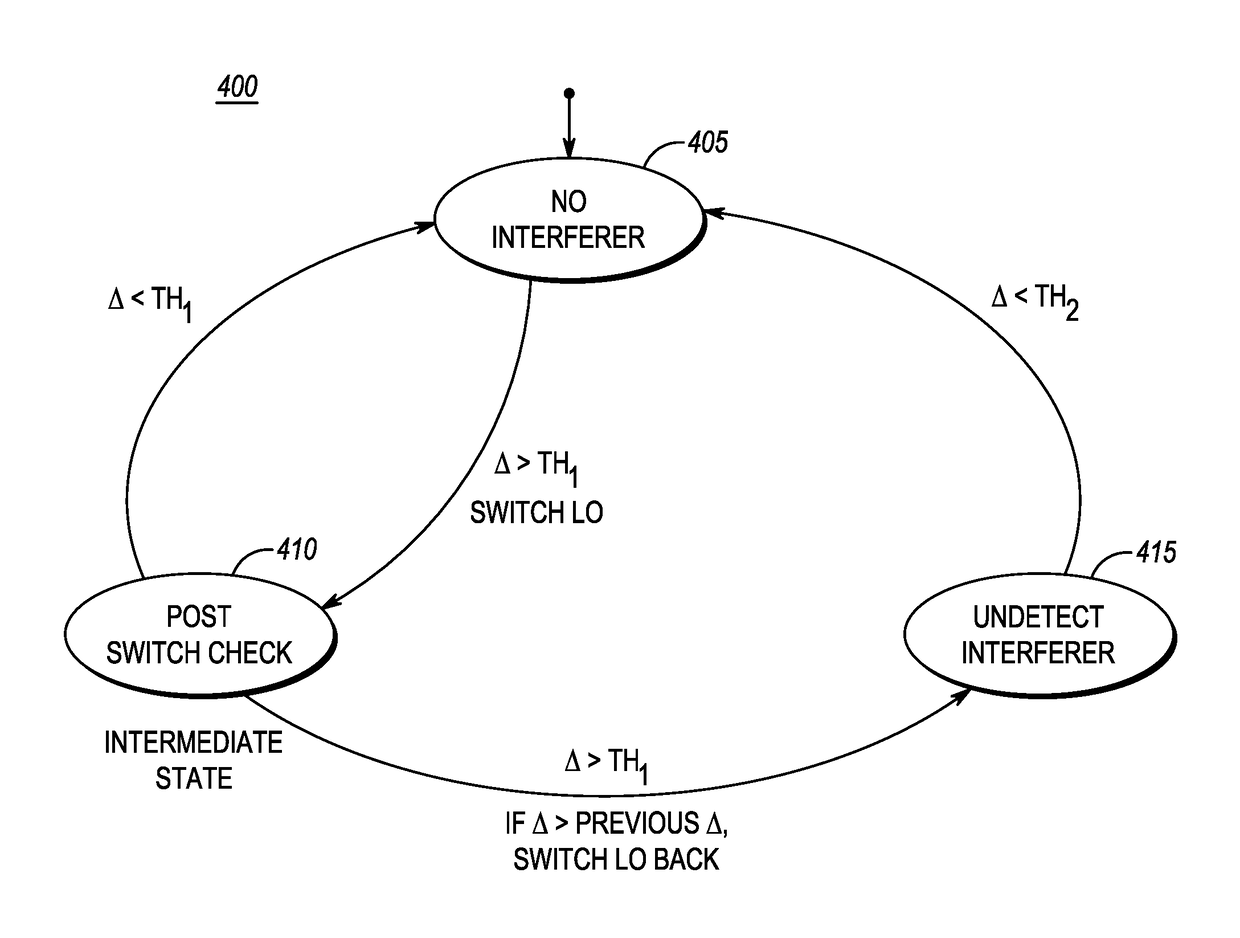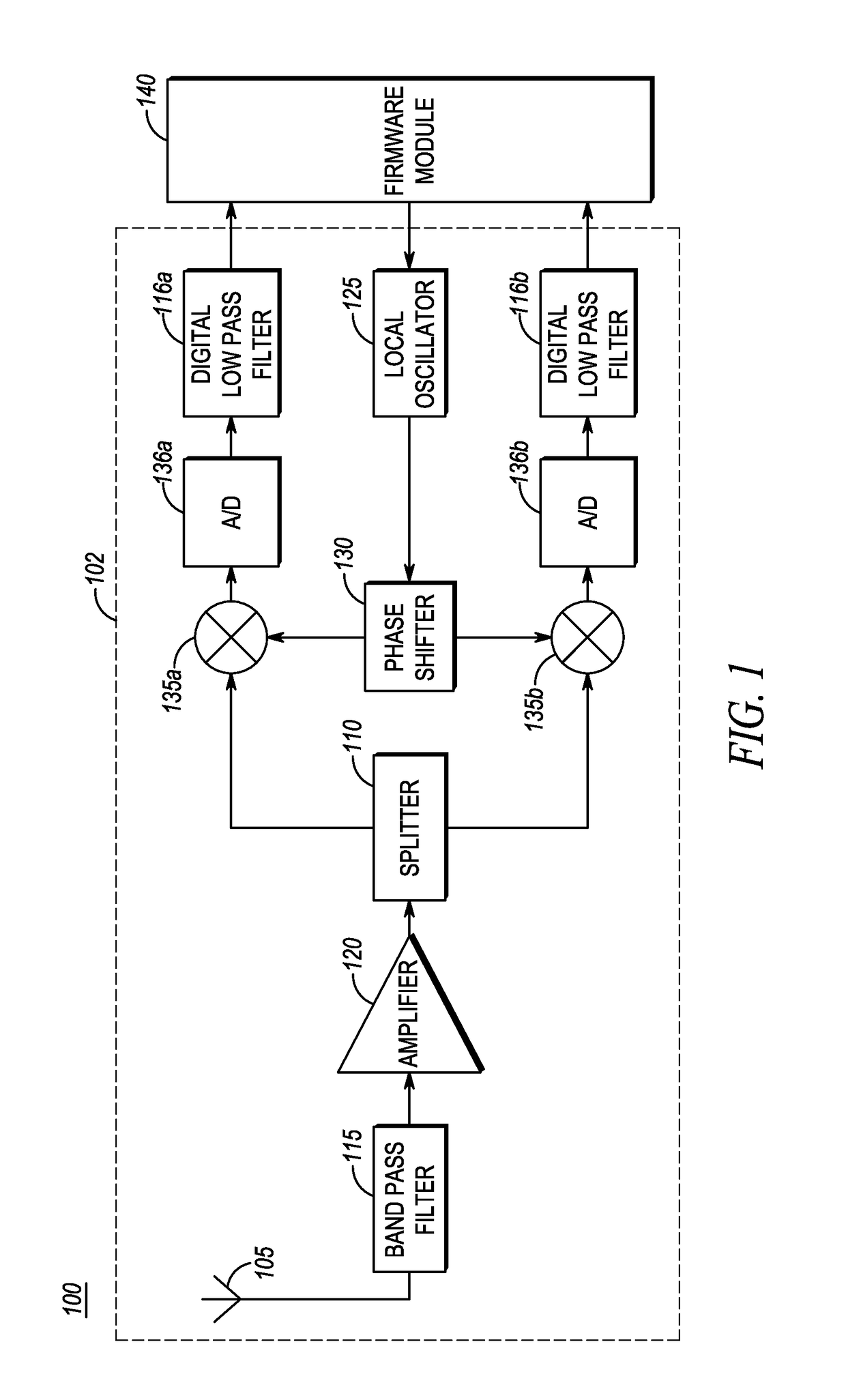Very low intermediate frequency (VLIF) receiver and a method of controlling a VLIF receiver
a receiver and intermediate frequency technology, applied in the field of data communication, can solve problems such as noise and distortion, work adequately, and pose a problem for carrier detection algorithms
- Summary
- Abstract
- Description
- Claims
- Application Information
AI Technical Summary
Benefits of technology
Problems solved by technology
Method used
Image
Examples
Embodiment Construction
[0018]According to certain embodiments of the present invention, a method of controlling a very low intermediate frequency (VLIF) receiver is provided, the method comprising: estimating a first energy level in a first signal, the first signal comprising a first, on-channel portion and an adjacent channel portion; estimating a second energy level in a second signal, wherein the second signal comprises an intermediate frequency translation of the first on-channel portion, wherein the first and second energy levels are estimated for corresponding time instances; detecting interference from a first adjacent channel interferer of the adjacent channel portion based upon a difference in energy between the first energy level and the second energy level; and controlling the VLIF receiver based upon the detected interference.
[0019]Advantages of certain embodiments of the present invention include improved adjacent channel selectivity through improved detection and reduction of interference. I...
PUM
 Login to View More
Login to View More Abstract
Description
Claims
Application Information
 Login to View More
Login to View More - R&D
- Intellectual Property
- Life Sciences
- Materials
- Tech Scout
- Unparalleled Data Quality
- Higher Quality Content
- 60% Fewer Hallucinations
Browse by: Latest US Patents, China's latest patents, Technical Efficacy Thesaurus, Application Domain, Technology Topic, Popular Technical Reports.
© 2025 PatSnap. All rights reserved.Legal|Privacy policy|Modern Slavery Act Transparency Statement|Sitemap|About US| Contact US: help@patsnap.com



